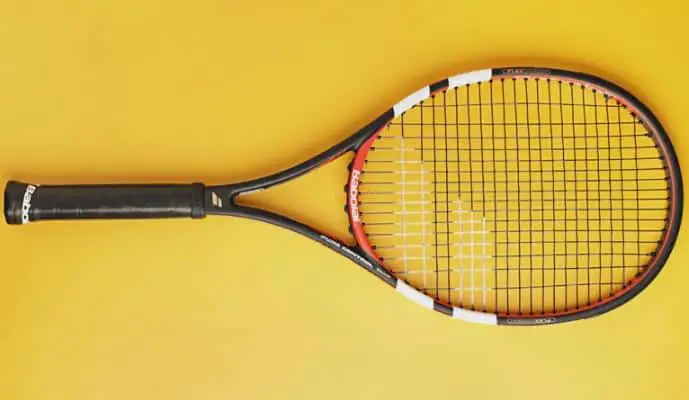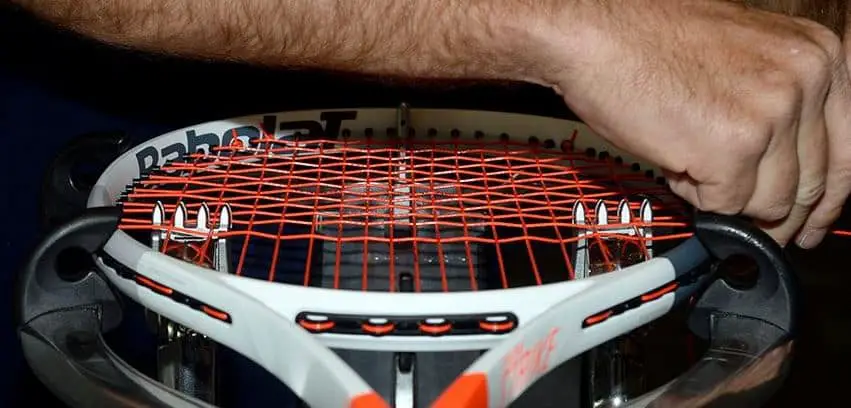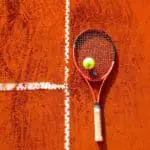
What is The Lifespan of a Tennis Racquet?
When you buy a tennis racquet, you are excited to try it out on the court. But not everyone asks about the longevity of a racquet.
There should be a lifespan for a tennis racquet like any other product on earth because they wear out as a result of continuous play.
So, how much does it hold before it’s completely broken and unplayable?
A tennis racquet can last for several years and remains in a good shape for an amateur player who practices a few days a month with low intensity.
However, a frame might exhaust in a matter of months for pros or advanced players who hit hard and play competitive tennis.
Briefly, club players typically need to change their racquet in about 5 years while big hitters/competitors normally change their racquet in 6-12 months.
What Factors Affect A Tennis Racquet Longevity?
There is no exact formula to determine a tennis racquet’s lifespan. Many factors play a role in a racquet’s longevity. Here are a few of them:
Play Intensity
This is a no-brainer. Club players don’t hit hard and they play for fun. I personally know players who’ve been playing with the same racquet for more than 15 years.
On the other side, advanced players hit hard, which implies more resistance and shock absorption from the strings that are transferred to the frame.
As a result, micro-cracks and warpage start to build up progressively, which deteriorates the whole structure of the racquet at a certain point.

In addition, the grommets are quickly affected by big power and spin, which changes the racquet feel and playability. So, they should be replaced or the entire racquet.
The Model
Not even the brands. Some models are built differently and can last very long even for big hitters or professionals.
For example, The Wilson Steam racquets are very solid and withstand the harshest play conditions.

Juan Martin Del Potro has only used 3 to 4 racquets in his entire career and they were Wilson Hyper Pro Staff 6.1 95 frames.
Stringing Process
There is a reason why some people are called professional racquet stringers. The average Joe can damage your racquet if he doesn’t do his job correctly.

In fact, the clamps that hold the racquet tight can scratch or even crack the frame inducing fragility that might manifest on the court by loss of feel or even a complete breaking.
The Degree of Care
A tennis player must take proper care of his racquet.
If you constantly beat it on the ground in anger or if you scratch it too often, the lifespan becomes short and it should break quickly enough.
Also, you should store it in an insulated bag compartment and keep it away from the sun’s rays. Otherwise, the UV rays will progressively damage the materials and provoke flimsiness in the racquet.
When to Replace Your Racquet?
As a rule of thumb, if your racquet starts to feel and play differently in your hands with your usual strings freshly put, this is the time to buy a new one.
For example, the frame becomes unstable on your hands, the bed might feel dead or you notice a drop in power or spin resulting in lots of misses.
Also, when a racquet is about to die, the sweet spot becomes small and any off-center shot will result in a mishit.
Can You Repair a Tennis Racquet?
A racquet with small cracks can be repaired but this is not a viable solution if you play competitive tennis.
Although we advise you to switch or buy a new one, if you play amateur tennis at your local club, you can save money and just do this quick fix to the hairline cracks in your racquet.
- Buy super glue and some baking soda
- Apply a thin layer of the superglue onto the crack
- Sprinkle a little baking soda on the top
- Wait 60 seconds for the drying
- Clean the spot and there you go.
This quick fix will work on almost any racquet material including modern-day graphite.

You can also replace the grommets or the butt cap of your racquet yourself or preferably with the help of a professional to elongate the lifespan of your frame.
If your racquet has serious cracks with a big opening, this fix can be ineffective, and we recommend using a new racquet.









